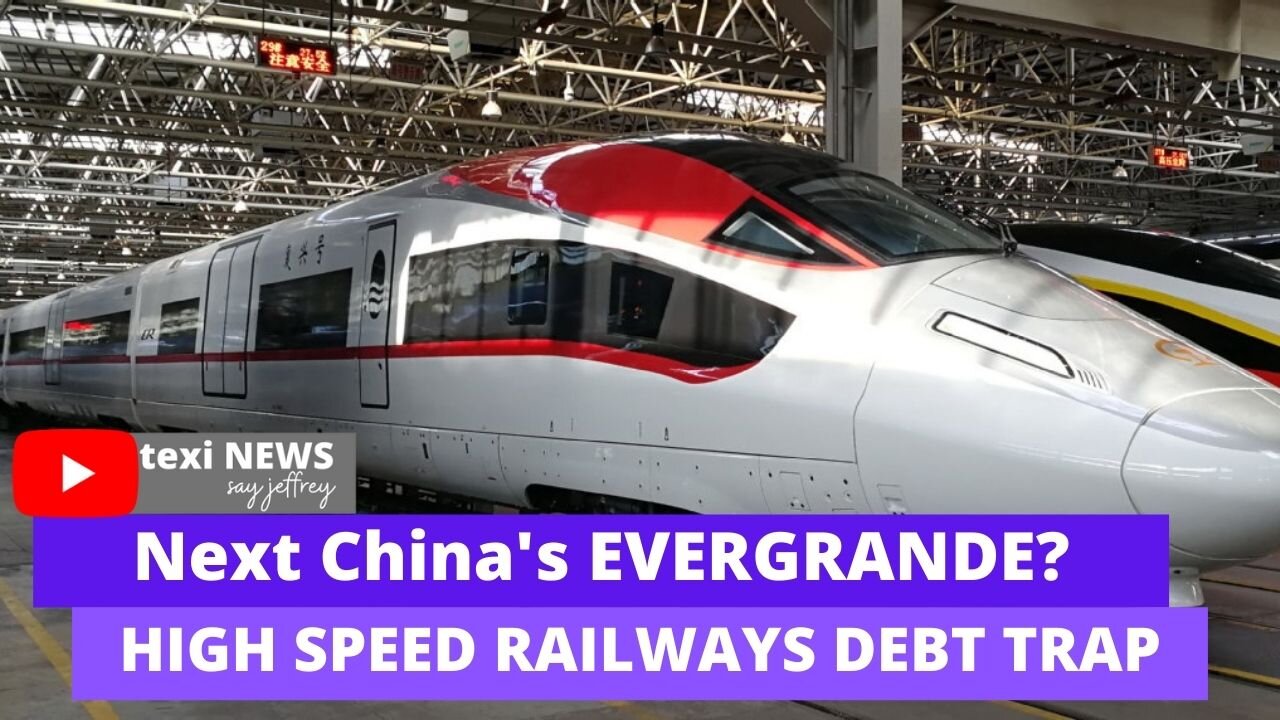Premium Only Content

China’s High Speed Railways Plunge from High Profits into a Debt Trap
China’s high-speed railways plunge from high profits into a debt trap.
Just over a decade ago, in 2009, China’s first long-distance high-speed rail (HSR) service covered the 968 kilometers between Wuhan and Guangzhou at an average speed of around 350 kilometres per hour. The feat was recognised as the Communist Party of China’s “debt-fuelled” response to the global financial crisis. It was a sort of a “Railway Keynesianism,” where China re-engineered its railway infrastructure to drive the demand for concrete and steel and create millions of jobs. In the decade that followed, China’s HSR network spanned over a track length of 38,000 kilometres, the highest in the world. Bagging a share of 26 percent of the country’s total railway network, HSR today connects almost every major city in China, with travel time just a couple of hours more than air travel, but with the comfort that only trains can provide.
China’s HSR obsession.
In the mad rush to gain the rich economic dividends that the HSR delivered on several profitable lines, especially the Beijing-Shanghai and Beijing-Guangzhou lines, provincial governments across the country have blindly tried to emulate the feat. However, most of such provincial construction has ignored the low- to zero- the potential of the expensive routes to attract similar volumes of passenger traffic and are running at high idle capacity.
Most new HSR lines in China have witnessed a sharp decline in their “transportation density”. Measured in passenger kilometres, it is an indicator that projects the line’s operating efficiency in terms of annual average transport volume per kilometer. For example, while the 1,318-kilometre Beijing-Shanghai HSR corridor’s transportation density was 48 million passenger kilometers in 2015 and continues to be high, the 1,776-kilometre Lanzhou-Urumqi line has only 2.3 million passenger-kilometers of transportation density. China’s overall transportation density of HSR was 17 million passenger kilometers in 2015, while it was 34 million passenger-kilometers for Japan’s Shinkansen in the same year.
-
 LIVE
LIVE
Eternal_Spartan
9 hours ago4th of July Zelda: Ocarina of Time pt. 1 | USMC Vet | Come Join the Best Chat on Rumble!!!!
153 watching -
 9:25
9:25
MattMorseTV
6 hours ago $0.29 earnedMayorkas is in HOT WATER.
56913 -
 17:14
17:14
T-SPLY
6 hours agoDemocrats Get Shut Down Trying To Enter Alligator Alcatraz Unannounced!
9.09K47 -
 LIVE
LIVE
Spartan
46 minutes agoPro Halo Player | Happy 4th! Ranked on Halo, SWTOR later maybe
31 watching -
 2:08:03
2:08:03
Roseanne Barr
5 hours ago"Neuralink Is The Mark Of The Beast" W/ Tom Althouse | The Roseanne Barr Podcast #105
162K50 -
 1:19:30
1:19:30
vivafrei
11 hours agoHappy 4th of July! Big Beautiful Bill PASSES! Diddy ACQUITTED! Canada's Demise Continues & MORE!
110K86 -
 8:52
8:52
Blackstone Griddles
8 hours agoQuick and Easy Summer Hot Dogs on the Blackstone Griddle
7.18K3 -
 9:35
9:35
Clownfish TV
14 hours agoNeil Druckmann Just QUIT The Last of Us...
12.2K7 -
 11:30
11:30
GBGunsRumble
4 hours agoGBGuns Range Report 04JUL25
7.11K1 -
 6:21:07
6:21:07
Dr Disrespect
9 hours ago🔴LIVE - DRDISRESPECT - LAND OF THE FREE. HOME OF THE TWO-TIME
151K13